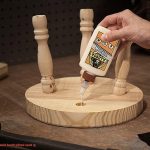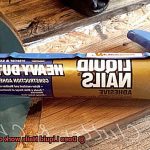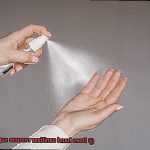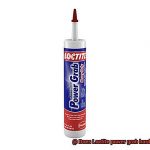Epoxy glue, the superhero of adhesives, sticks like a champ. But when it’s time to part ways, it can leave us scratching our heads. So, does heat really have what it takes to kick epoxy glue to the curb? Today, we’re diving into this sticky situation to uncover the truth about using heat as an epoxy escape plan.
Epoxy glue is known for its Herculean strength and resistance to everything from scorching temps to harsh chemicals. No wonder it puts up a fight when we try to remove it. Traditional methods like scraping or solvents often fall short, leaving behind residue or causing damage. That’s where heat comes in – an unconventional yet effective ally.
By applying heat, we can soften and tame epoxy glue, making it easier to say goodbye. The higher temperature weakens the adhesive’s grip and turns it into putty in our hands (well, almost). But keep in mind that not all epoxies are created equal, so results may vary depending on the type you’re dealing with and the surface underneath.
The secret sauce behind using heat lies in reaching epoxy glue’s glass transition temperature (Tg). This fancy term marks the point where epoxy goes from rock-hard to more flexible and workable. By cranking up the heat just right, we can coax that stubborn adhesive past its breaking point and make removal a breeze.
You don’t need fancy gadgets – a trusty hairdryer or even boiling water can do the trick. Just remember to play it safe and follow guidelines to avoid mishaps or unexpected injuries.
In the upcoming sections, we’ll dive deeper into dos and don’ts for applying heat, explore alternative methods for tackling epoxy glue, and dish out practical tips for guaranteed success. We’ll also spill the beans on situations where heat might not be the hero we hoped for.
In a nutshell, understanding the power of heat in removing epoxy glue can save us headaches during repairs, renovations, or simply swapping out bonded objects. While it’s not a magic cure-all, heat has proven its worth in the DIY world time and again. So let’s roll up our sleeves and unravel the mysteries of saying goodbye to epoxy glue with some fiery assistance.
The Benefits of Using Heat to Remove Epoxy Glue
Contents
- 1 The Benefits of Using Heat to Remove Epoxy Glue
- 2 Temperature Requirements for Removing Epoxy Glue with Heat
- 3 Applying Heat to Remove Epoxy Glue: Heat Gun or Hairdryer
- 4 Soaking Objects in Hot Water to Soften Epoxy Glue
- 5 Precision Heating Techniques for Intricate Projects
- 6 Not All Epoxies Respond Well to Heat
- 7 Considerations Before Attempting to Remove Epoxy with Heat
- 8 Alternative Methods for Removing Epoxy Glue without Heat
- 9 Conclusion
Epoxy glue is renowned for its incredible strength and durability, making it a popular choice for various applications. However, when it comes to removing epoxy glue, the task can be challenging. Fortunately, heat offers a non-toxic, versatile, and efficient solution. In this article, we will delve into the benefits of using heat to remove epoxy glue.
Non-toxic and Environmentally Friendly:
Heat provides a safe and eco-friendly alternative to chemical solvents. Unlike these solvents that emit harmful fumes and toxins into the air, heat, whether generated by a heat gun or hairdryer, softens the epoxy without releasing any harmful substances into the environment. It’s a clean and green way to tackle the problem.
Precise Control:
One of the advantages of using heat is the ability to have precise control over the removal process. By directing the heat onto specific areas, you can avoid damaging surrounding materials while targeting the epoxy adhesive. This precision allows for a more careful and controlled removal process.
Speeds up the Removal Process:
When it comes to efficiency, applying heat to epoxy glue significantly speeds up the removal process. As the adhesive softens under the influence of heat, it becomes easier to scrape or peel off. This saves you time and effort compared to other removal methods that may require more forceful scraping or repeated applications of solvents.
Versatility on Various Surfaces:
Heat can effectively remove epoxy glue from a wide range of surfaces, including metal, wood, plastic, and glass. This versatility makes it an ideal method for various projects. Whether you need to remove epoxy from a delicate glass surface or a rough wooden one, heat can be applied without causing damage.
Ideal for Large or Thick Layers of Adhesive:
If you’re dealing with larger or thicker layers of epoxy glue, heat is particularly useful. It breaks down the bond between the epoxy and the surface, making it easier to remove. This can be especially beneficial when working on projects that involve industrial or construction applications, where epoxy layers can be thicker and more challenging to remove.
Temperature Requirements for Removing Epoxy Glue with Heat
If you’ve ever found yourself in a sticky situation where you needed to part ways with stubborn epoxy glue, then rejoice. In this article, we shall embark on an exciting journey through the temperature requirements for effectively and safely removing epoxy glue using the incredible power of heat. So, tighten your belts and get ready to explore the fascinating realm of heat-powered epoxy glue removal.
Understanding the Basics:
Before we dive into the intricacies of epoxy glue removal, let us first grasp how heat influences this formidable adhesive. Renowned for its strength and durability, epoxy glue serves as a steadfast companion for various applications. However, there may come a time when you need to bid farewell to this clingy companion.
The Power of Heat:
Heat emerges as the secret weapon that can soften and dismantle the chemical bonds of epoxy glue, facilitating its removal. But here’s the catch: different epoxy glues require varying temperature thresholds due to their unique compositions. Thus, it is crucial to identify the type of epoxy you’re dealing with before applying heat.
Finding the Sweet Spot:
In general, most epoxy glues start to yield and become more malleable at temperatures ranging from 200-250°F (93-121°C). Within this temperature range, you can gently scrape or peel off the adhesive without causing significant harm to underlying surfaces.
However, bear in mind that thicker or more obstinate layers of epoxy might necessitate higher temperatures. In certain cases, temperatures exceeding 300°F (149°C) may be required for complete softening and removal. As a word of caution, always commence with lower temperatures and gradually increase if necessary, as excessive heat can lead to undesirable damage.
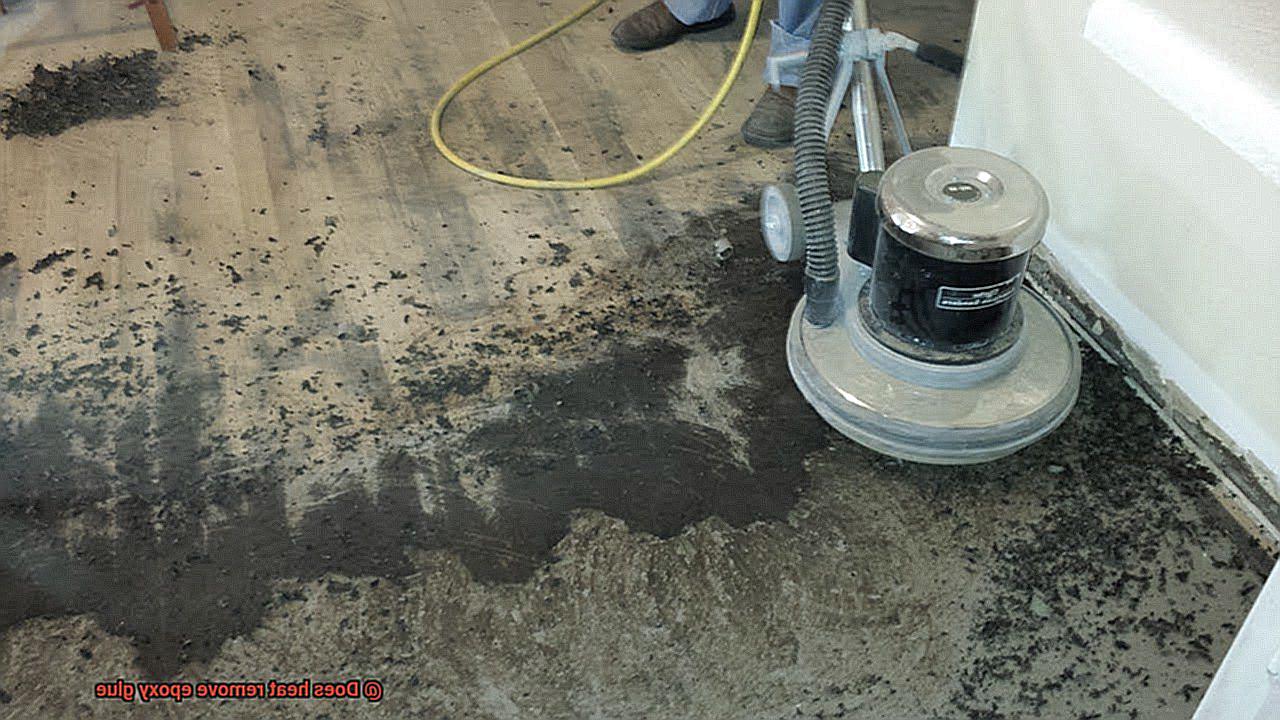
Time Matters:
Patience proves paramount when it comes to heat-powered epoxy glue removal. While prolonged exposure to heat can further soften the adhesive, exercise caution not to overdo it. Extensive exposure to high temperatures may result in unexpected damage, so it is crucial to closely monitor the process.
Safety First:
As with any DIY endeavor, prioritizing safety remains essential. When employing heat for epoxy glue removal, ensure adequate ventilation and don protective gear such as gloves and goggles. Additionally, be mindful of the surface and materials involved, as excessive heat may cause discoloration or charring.
Applying Heat to Remove Epoxy Glue: Heat Gun or Hairdryer
Epoxy glue can be a formidable opponent when it comes to removal, but fear not. We’re here to share some expert insights on harnessing the power of heat to loosen and pry away that tenacious adhesive. In this article, we’ll compare the benefits and drawbacks of using both a heat gun and a hairdryer, while also discussing essential safety precautions and a step-by-step process for successful epoxy glue removal.
Heat Gun: The Mighty Warrior
A heat gun is a robust tool that emits a concentrated stream of scorching hot air. Widely used in industrial settings, its ability to reach high temperatures makes it an ideal choice for tackling stubborn epoxy glue. However, caution must be exercised as excessive heat can potentially damage surrounding materials or even cause burns.
Hairdryer: The Accessible Ally
Don’t fret if you don’t have a heat gun on hand; a trusty hairdryer can still get the job done. While it may not reach the same blistering temperatures as its counterpart, a hairdryer can generate enough heat to soften the adhesive. Remember to set your hairdryer to its highest heat setting for optimal results.
Safety Precautions:
- Start with a low temperature setting and gradually increase if needed to avoid overheating and potential damage.
- Shield yourself by wearing sturdy gloves and protective goggles.
- Ensure proper ventilation to prevent inhaling any fumes.
- Steer clear of pointing the heat source at flammable materials or surfaces.
- Keep the tool at a safe distance from your skin to prevent painful burns.
Step-by-Step Removal Process:
- Prepare the battleground by clearing away any loose debris or dirt from the surface, allowing for better adhesion of the heat.
- Engage the heat source, directing it towards the glued area in a rhythmic back-and-forth motion, ensuring the heat is evenly distributed.
- As the epoxy glue begins to yield under the application of heat, wield a scraper or a plastic putty knife to gently pry it away from the surface. Exercise finesse to avoid inflicting damage.
- Apply measured force to free the adhesive, respecting the surface beneath.
- If stubborn remnants of epoxy glue persist, repeat the heating process until they surrender and are completely removed.
- Rejoice in victory. After successful removal, cleanse the surface thoroughly with an appropriate solvent or a combination of soap and water to eliminate any lingering residue.
- Choose the perfect temperature: The temperature of the water is crucial for success. It should be as hot as possible without causing any damage to the object being soaked. A safe range typically falls between 150-200 degrees Fahrenheit (65-93 degrees Celsius).
- Immerse with care: Submerge the object, ensuring full coverage of the epoxy glue with the hot water. Eliminate any trapped air bubbles that may hinder the process.
- Embrace patience: The epoxy glue needs time to soften under the gentle assault of heat. Depending on its thickness and curing time, you may need to leave it in the hot water for anywhere from 30 minutes to a few hours. Remember, patience is key.
- Test for progress: Once the soaking time has elapsed, carefully remove the object from the hot water and test if the epoxy glue has sufficiently softened. Gently scrape or peel off a small area to assess its pliability. Should it still feel unyielding, return it to the hot water for further soaking.
- Remove with finesse: As soon as the epoxy glue has reached an ideal state of softness, proceed to remove it from the object. Employ a plastic scraper or your fingers to gently scrape or peel away the adhesive, taking care not to damage the object’s surface.
- Epoxies hold the key to heat resistance within the labyrinth of their chemical composition and unique curing process.
- To brave high temperatures unscathed, epoxies crafted for heat resilience are enriched with special additives that fortify their thermal stability.
- Certain epoxies face a formidable foe when exposed to scorching temperatures, as they begin to soften, melt, or form bubbles.
- This perilous transformation weakens their bond strength, rendering them feeble as adhesives.
- When selecting an epoxy for a heat-intensive environment like an engine or a manufacturing process involving extreme heat, choose an epoxy that can withstand the inferno.
- A heat-resistant epoxy is the key to maintaining adhesive prowess under the most demanding thermal circumstances.
- Should an epoxy unsuited for intense heat be inadvertently exposed to such conditions, parting ways becomes necessary.
- Employing controlled heat can soften the epoxy for removal, but tread carefully to prevent harm to the substrate or surrounding materials.
- Witness the magic of a heat gun as it delicately caresses the epoxy, rendering it supple and effortless to remove.
- Direct the gentle warmth onto the epoxy while safeguarding delicate surfaces, using low temperatures as your guiding star.
- Behold the radiant prowess of an infrared heat lamp, emitting focused rays that penetrate deep into the epoxy, weakening its grip.
- Maintain a safe distance to prevent scorching or harm to delicate components.
- Equip yourself with a soldering iron, its flat tip granting unrivaled control when applying heat directly to the epoxy.
- Skillfully weaken the epoxy’s stronghold without causing collateral damage.
Soaking Objects in Hot Water to Soften Epoxy Glue
Epoxy glue, known for its formidable bonding properties, can sometimes pose a challenge when we need to remove or reposition glued objects. That’s where the ingenious technique of soaking objects in hot water comes into play, softening the grip of epoxy glue and allowing for easier manipulation.
The concept behind using hot water to soften epoxy glue lies in heat’s ability to break down adhesive bonds, rendering them less sticky and more malleable. To effectively employ this method, follow these step-by-step guidelines:
It’s important to note that soaking objects in hot water may not eradicate all traces of epoxy glue, particularly if it was applied thickly or has cured for an extended period. In such cases, additional methods like scraping, sanding, or using solvents may be necessary to ensure complete removal.
Lastly, prioritize safety throughout the process. Don protective gloves and ensure proper ventilation in the area of soaking to safeguard against potential burns and fumes released during the procedure.
Precision Heating Techniques for Intricate Projects
Here, we will delve into the world of precision heating and explore the various methods that can effectively remove epoxy glue from delicate surfaces.
One of the most widely used precision heating techniques is the trusty heat gun. This handheld device blows a stream of hot air onto the surface, gently softening the epoxy and making it easier to remove. To avoid mishaps, remember to set the heat gun to a low setting, ensuring that you don’t overheat or damage your materials. By directing the heated air onto the epoxy, you will notice it becoming malleable, allowing for a smoother removal process.
Another effective method is utilizing an infrared heat lamp. These lamps emit focused infrared rays that penetrate the epoxy, gently heating it from within. The heat causes the epoxy to lose its bond and soften, making it a breeze to remove. However, exercise caution and maintain a safe distance between the heat lamp and your project to prevent overheating or damaging any delicate components.
For particularly intricate projects, specialized heating tools like a soldering iron with a flat tip can be a game-changer. This tool allows for precise application of heat directly onto the epoxy, softening it without harming surrounding materials.
When employing precision heating techniques, safety should always be paramount. Remember to wear protective gloves and goggles to shield yourself from hot surfaces and flying debris. Additionally, be mindful of the temperature and duration of heat exposure to avoid any potential damage or discoloration.
Not All Epoxies Respond Well to Heat
If you seek to unravel the adhesive riddle and emerge victorious in your epoxy glue dilemma, this is your haven. In this article, we shall embark on a journey to understand why not all epoxies respond well to heat. Get ready for a tapestry of knowledge that will empower your adhesive choices.
Unveiling the Secrets of Heat Resistance in Epoxies:
Chemical Composition and Curing Process:
The Perils of Intense Heat:
Choosing the Right Epoxy for Heat-Intensive Applications:
The Power of Intention:
Bidding Farewell to Unsuitable Allies:
Precision Heating Techniques:
The Charisma of a Heat Gun:
The Radiant Hero – Infrared Heat Lamp:
Surgical Precision with a Soldering Iron:
Considerations Before Attempting to Remove Epoxy with Heat
In this comprehensive guide, we will delve into the world of epoxy removal with heat and explore the crucial considerations you need to keep in mind before embarking on this fiery endeavor.
Assess the Surface:
Before subjecting your epoxy to the flames of liberation, take a moment to evaluate the surface it is bonded to. Delicate materials like wood or plastic can be highly susceptible to heat damage. Play it safe and consider alternative methods if you suspect your material may not withstand the scorching heat.
Know Your Epoxy:
Epoxy comes in various formulations, each with its own melting point. Take the time to identify the specific temperature at which your epoxy starts to soften. Armed with this knowledge, you can confidently break down the adhesive without compromising the integrity of the underlying surface.
Safety First:
When dealing with heat and adhesives, safety should always be paramount. Don protective gloves and eyewear before embarking on your epoxy removal mission. Additionally, ensure proper ventilation in your workspace to minimize exposure to potentially harmful fumes.
Test, Test, Test:
Before unleashing your chosen heat source on the entire surface, it is wise to perform a small test in an inconspicuous area. This trial run will help you determine if your material can withstand the heat without suffering any damage.
Heat Source Precautions:
When wielding a heat gun or blowtorch, exercise caution and maintain a safe distance from the epoxy. Overheating or burning the surrounding area is a risk best avoided.
Ventilation Matters:
Remember that excessive heat can cause epoxy to release toxic fumes. To safeguard your well-being, always work in a well-ventilated area or consider using a respirator if necessary.
Supplementary Tactics:
In some cases, heat alone may not be enough to fully remove the epoxy. Do not despair. Additional techniques such as scraping or utilizing specialized chemical solvents designed for epoxy removal can help you achieve your desired outcome.
Alternative Methods for Removing Epoxy Glue without Heat
We’ve all experienced the frustration of trying to remove stubborn epoxy glue, only to be deterred by the thought of using heat. But fear not. There are alternative methods that can save the day without turning up the temperature. In this comprehensive guide, we’ll explore effective techniques for removing epoxy glue without heat, ensuring a clean and seamless result.
Method 1: Solvents and Adhesive Removers
If you prefer a chemical approach, solvents and adhesive removers specially designed for epoxy glue removal are readily available. These potent concoctions work by dissolving the adhesive, making it easier to remove. Remember to carefully follow the manufacturer’s instructions and ensure proper ventilation when using these solvents.
Method 2: Acetone Magic
Acetone, found in nail polish removers, can work wonders in breaking down epoxy glue. However, exercise caution as it may damage certain surfaces. Test it on a small area before proceeding. Apply a small amount of acetone on a cloth or paper towel, gently rubbing the glued area. Allow it to sit for a few minutes to soften the adhesive before scraping it off with a plastic scraper or your fingernail.
Method 3: Sanding and Grinding
For larger surfaces, mechanical means such as sanding or grinding can be effective. Use coarse-grit sandpaper or a sanding block to gradually wear away the epoxy glue until it is fully removed. Safeguard your eyes and lungs by donning goggles and a mask while sanding.
Method 4: Freeze It Out
Freezing the epoxy glue can make it more brittle and easier to remove. Place an ice pack or a bag of frozen vegetables over the glued area and leave it for several hours or overnight. Once frozen, use a plastic scraper or a blunt object to gently chip away at the glue.
Also Read: How To Remove Glue From Furniture?
Conclusion
Heat is indeed an effective method for removing epoxy glue. The application of heat softens the adhesive, allowing it to be easily peeled or scraped off surfaces. This process can be accomplished using a heat gun, hairdryer, or even hot water. By subjecting the epoxy glue to high temperatures, its bond weakens, making it simpler to remove without damaging the underlying material.
Furthermore, the power of heat lies in its ability to penetrate deep into the layers of epoxy glue. As the temperature rises, the adhesive’s molecular structure begins to break down, losing its grip on surfaces. This phenomenon not only facilitates removal but also ensures that no residue remains behind.
Imagine wielding a heat gun like a superhero armed with a powerful weapon against stubborn epoxy glue. With each sweep of hot air, you witness the adhesive surrendering its hold and succumbing to the force of heat. It’s as if nature itself conspires with you in this battle against sticky bonds.
But don’t underestimate the simplicity of using everyday tools like a hairdryer or hot water. They possess their own charm when it comes to defeating epoxy glue’s tenacity. Picture yourself pouring scalding water over an obstinate patch of adhesive or directing a stream of warm air from your trusty hairdryer onto its surface. In these moments, you become an alchemist transforming stubbornness into pliability.
In conclusion, heat is undoubtedly a formidable opponent for epoxy glue. Its ability to soften and weaken adhesives makes it an invaluable tool for removal purposes.


